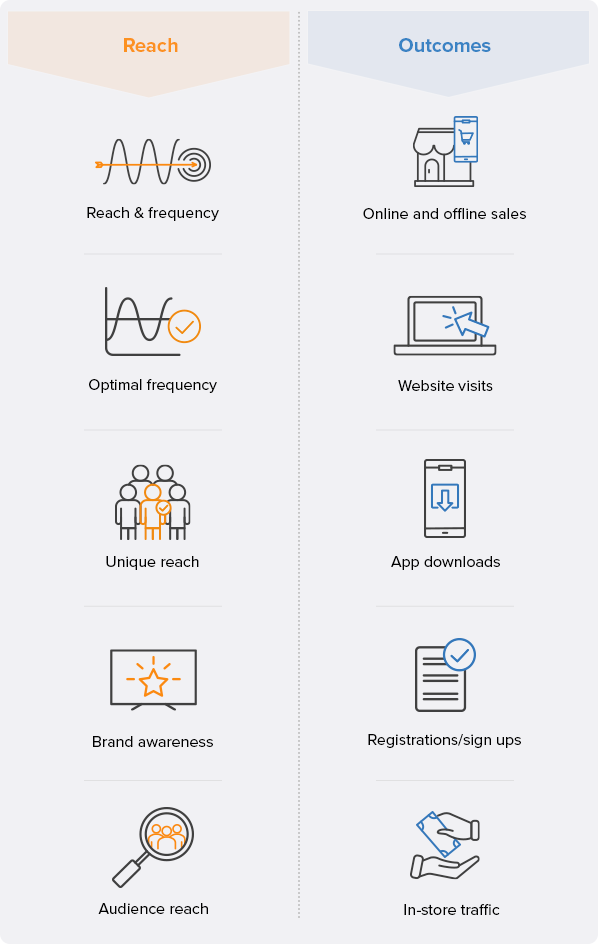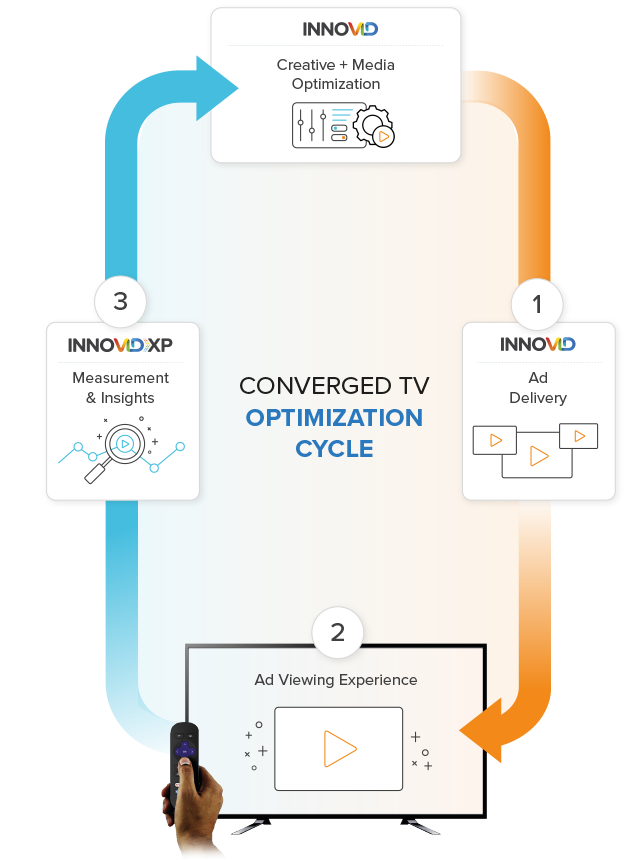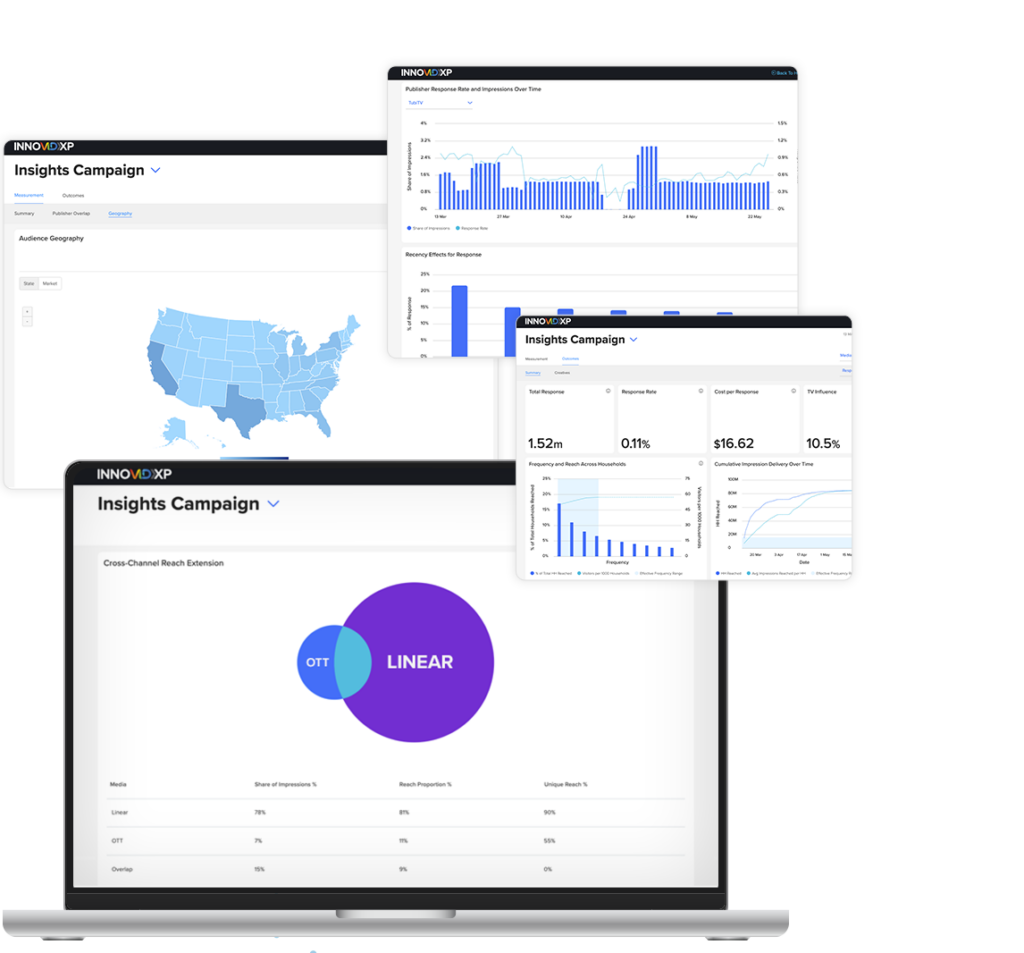Resources > The Fundamentals of Converged TV Measurement
The Fundamentals of
Converged TV Measurement
Your one-stop shop for understanding ad measurement in the highly fragmented, but highly valuable converged TV space
What is converged TV?
When you “watch TV,” do you ever really think about how and where you’re doing it? Whether it’s watching a live NFL game on Fox, binging a new show on Netflix, or catching up on a favorite YouTube channel – as free-wheelin’ viewers, all that matters to us is having access to the content we want, whenever, however, and wherever we want it. The fragmented TV marketplace has turned the advertising industry on its head because TV strategies are no longer about programs and ratings, they are about reaching audiences across platforms.
Converged TV encompasses linear TV, connected TV (CTV), and digital video.
With the TV experience reimagined, viewers are no longer bound by time, platforms, locations, or devices. The good news is that there have never been more ways for advertisers to find, reach, and engage with their audiences. But the downside is that making sense of a fragmented market, one filled with different platforms, metrics, devices, and data sources, hasn’t been easy. And legacy TV processes and measurement (cough, ratings, cough) simply haven’t kept up. It’s been a challenging time for advertisers when it comes to finding audiences and efficiently and effectively engaging them.

Measurement to “connect it all”
Advertisers see the value of investing in converged TV, but getting a unified view across platforms can be a challenge. Luckily, converged TV measurement innovation has exploded in recent years – arming advertisers with a single source of truth to “connect the dots” across linear, CTV, and digital video.
Through a unified and consistent view of campaigns, converged TV measurement provides actionable reach and performance analytics to inform and optimize the media mix.
Converged TV measurement is about ingesting disparate datasets and metrics across platforms and devices, harmonizing them, and generating actionable insights that provide audience reach and performance analytics. They tell you who you reached, where, when, and the actions driven so that you can accurately quantify the value and impact of your total TV investment and then use the intel for continuous optimization.
Fragmentation can kick rocks!
Benefits of Converged TV Measurement
Unify view of converged TV advertising
One real-time view of reach & performance for linear, CTV,
& digital video
Future-proof scale
Seamlessly incorporate new platforms and data sources as the media ecosystem evolves
Consistent counting
Data harmonized and consistently counted to tell the whole story
Full-funnel metrics
Measure online and offline outcomes throughout the purchase funnel and customer journey
Cross-device
Powerful insights spanning devices – mobile, desktop, and TV
Transparency
Unskewed, independent analytics on the good, bad, and (hopefully not) ugly
What can be measured?
From creatives and inventory to reach and performance, the real question is, what can’t be measured? While TV advertisers were once beholden to a limited set of metrics that didn’t tell them much (usually viewership-based stats like ratings or GRPs), the explosion of measurement innovation, combined with new datasets for even deeper insights, has changed the game.
Today, advertisers can measure the “metrics that matter” – meaning KPIs that are unique to a business, align to campaign goals, and unequivocally prove the value of converged TV strategies and investments. The granularity of metrics that can be measured grow everyday, but it’s easiest to think about them in two ways:
- Reach-based: These are your “counting” metrics – very simply, how many people you reached and at what frequency. They include reach, frequency, and unique reach, a critical metric in a today’s increasingly digital world. That’s all about finding unique or new audiences: Who did I reach on CTV vs. linear? How did adding streaming platforms to the mix extend reach to net-new households? And which of those platforms are delivering the most reach?
- Outcomes-based: These are your performance metrics that answer, “what actions did my campaign drive in CTV and linear TV?” From online activities like sales, app downloads, website visits, and registrations, to offline actions like in-store traffic and purchases, outcomes metrics are increasingly important to advertisers. For you old-school ad-techies out there, this bucket can also fall under the term “attribution.”
The bottom line? Converged TV measurement gives advertisers the ability to tie the impact of both media/inventory and creatives throughout the customer journey all the way through to ROI.

Actionable intel
Converged TV measurement gives you an unprecedented view of how your campaign is working. But to make that intel truly valuable, you have to do something with it! After all, data is just a bunch of numbers if you don’t make it actionable … then it’s a goldmine.
When you know what’s working and what’s not, you can use that real-time data to continuously optimize in-flight, shift budgets and impression allocation, and inform future campaign planning. These are the most common ways advertisers make insights actionable:
- Media optimization: Using measurement insights, many advertisers consider their converged TV mix to be diverse, almost “living/breathing,” entities that reflect today’s always-on world. And that means leveraging analytics to continuously reallocate spend and adjust impressions based on reach and performance insights across inventory and audiences – whether it’s a particular streaming platform, audience segment, or buying inventory on a new linear channel, daypart, or genre. It’s consistent and continuous “fine tuning” to find the right mix across CTV, linear, and digital to meet the KPIs that matter most.
- Creative optimization: Converged TV measurement, coupled with creative management technologies like dynamic optimization, sequential messaging, and interactive formats, are empowering advertisers to not only understand creative performance, but to also make the in-flight changes to maximize their impact among target audiences.
Overall, it’s about continuously adapting both the converged TV mix and the creatives used to align with market dynamics and strengthen reach and performance.

How it works
Converged TV measurement solves for fragmentation, breaks down silos, and unlocks invaluable insights on the efficiency and effectiveness of your campaigns. Not all heroes wear capes. But how does it all work? Without making our CTO’s eye twitch by giving away the secret sauce, here’s a quick overview of how converged TV measurement connects the dots.
Ingesting real-time first- and third-party data sources (from places like smart TVs, set-top boxes, ACR, CTV impressions, location data, even walled gardens), Innovid’s platform measures each channel individually before “harmonizing” the data to generate invaluable insights. Our technology brings consistency to chaos, by combining methodologies across linear and CTV – with impressions as the common count – so that you can understand the reach and business impact of your converged TV campaign, no matter where, when, or how it ran. Oh, and it’s all underpinned by a privacy-compliant identity infrastructure too.

What Else Can We Help You With?
Want to Learn How We Can Make Your Advertising Easier?